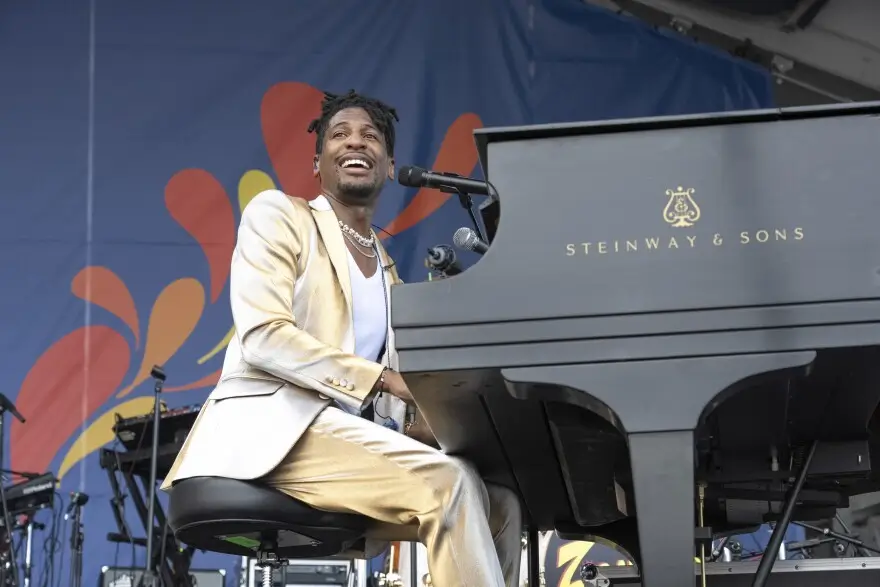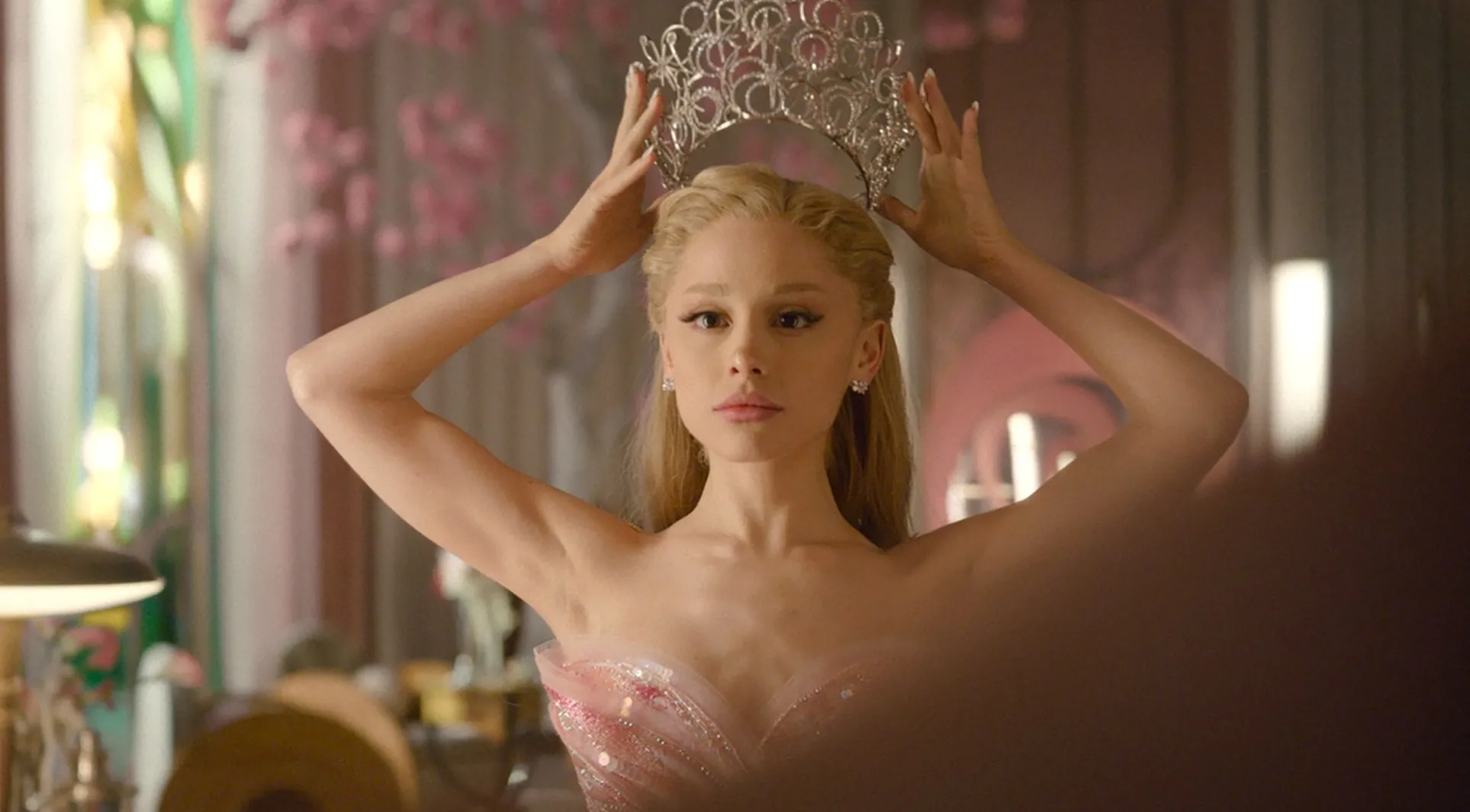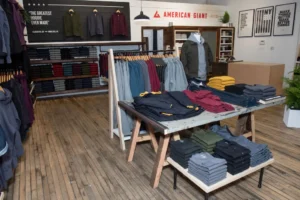Jon Batiste (Grammy-Oscar Award Winning Musician’s latest album, “Big Money,”) stands under the red stone cliffs of Colorado’s Red Rocks Amphitheatre, melodica in hand, watching the late-afternoon light settle over the canyon. In a moment between soundcheck and showtime, he smiles and says, “It’s an unusual artifact. You can’t hold music.” The line has the feeling of something he has said before, yet its meaning doesn’t dull. It captures a paradox at the center of his life: music is ephemeral, a vibration that disappears the instant after it’s created, yet the tools he plays — the melodica, piano, saxophone, vintage keyboards, percussion from New Orleans and beyond — are physical anchors. They are the objects that allow him to shape the intangible.
For Batiste, who has collected instruments for decades, these pieces are not trophies or museum artifacts. They are living companions, each with its own history, its own quirks, its own voice. On tour with his latest album, he brings a rotation of these instruments not as spectacle but as narrative. He believes an instrument remembers things a musician cannot put into words.
stir
Batiste’s relationship to music began long before he touched a piano. Born into the extended Batiste musical dynasty of New Orleans — a family whose roots weave through marching bands, club circuits, parades, and church choirs — he grew up inside an ecosystem where rhythm was inherited. Sound was everywhere: block parties, street processions, brass rehearsals, kitchen-counter percussion. Music was a public language. It taught him early that expression is collective, not solitary.
The piano became his primary voice, but curiosity led him beyond it. By adolescence he was experimenting with saxophone, electronic keyboards, drums, melodica. He absorbed each instrument as if it were a dialect of the same universal language, and this expansive understanding formed the foundation of his artistry. Even today, when he talks about an instrument, he describes it not as a technical tool but as a memory holder. A melodica becomes a shortcut back to childhood. A vintage Wurlitzer recalls the smoky warmth of classic soul records. A handmade drum links him to West African rhythmic tradition.
If New Orleans taught him rhythmic inheritance, exploring instruments taught him that traditions can transform — that the past is not a constraint but a palette.
flow
Over the last decade, Batiste’s visibility rose with extraordinary velocity. His seven-year run as bandleader of The Late Show with Stephen Colbert transformed him into a nightly presence in American households, where his spontaneity, spiritual warmth, and improvisational ease made him a cultural fixture. At the same time, his creative output expanded far beyond the late-night stage.
His score for Pixar’s Soul — co-composed with Trent Reznor and Atticus Ross — earned him an Academy Award, a BAFTA, and a Golden Globe. His album WE ARE won the Grammy for Album of the Year. His documentary American Symphony drew attention for its intimate portrayal of his creative process and personal life. Across each of these moments, his multi-instrumentalism was not a side detail. It was the engine of his musical identity.
Batiste’s collection grew exponentially during these years, and so did his philosophy around it. Instruments became a way of grounding himself while moving quickly through the public eye. He once remarked that switching instruments mid-writing session “opens a different part of the brain,” a subtle way of saying that his creativity has never been singular. It is a network of sounds, histories, materials, and tactile sensations.
idea
Many collectors gather objects to preserve a past moment. Batiste collects instruments to reinvent it. His approach to heritage is not nostalgic. It is additive. He respects the lineage of New Orleans piano, yet he blends it with global rhythms, experimental electronics, vocal layering, and orchestral textures. He moves between genres as if the boundaries were merely suggestions.
His collection mirrors this openness. He may reach for a melodica during a jazz-inflected set, then switch to saxophone for a gospel-inspired improvisation, then transition into a synthesizer texture that reframes the entire performance. Each instrument offers a different portal into the same emotional landscape. He says that playing them reminds him that “music is infinite, but an instrument shows you its edges. You learn something by touching the edges.”
Onstage, especially in venues like Red Rocks where acoustics can transform a single note into a landscape, those edges become part of the drama. Audiences watch him move from one instrument to another, witnessing the physical transformation that shapes the sound. The shifts feel intentional but unforced — as if he is following the instruments rather than commanding them.
now
Batiste’s current moment is defined by expansion. His touring ensemble has become more fluid, incorporating orchestral musicians, improvisational players, and collaborators from multiple traditions. His latest album draws from global influences: Caribbean percussion, European classical phrasing, East African polyrhythms, American gospel. Instead of smoothing these influences into a blended style, he allows them to coexist, forming a mosaic rather than a unified genre.
His instrument collection plays a direct role in this era. He has spoken about designing new keyboard rigs, acquiring custom-built instruments, and experimenting with wind instruments outside the Western canon. For him, the collection is never complete. It is a landscape still unfolding.
He is also more reflective now, especially after the release of American Symphony, a documentary that chronicles his professional ascent alongside personal challenges, including his wife Suleika Jaouad’s ongoing cancer treatments. That duality — creation and vulnerability — has sharpened the way he speaks about music. He seems more aware of its stakes, more attuned to the spiritual power within it, more committed to using sound as a method of care.
impression
When Batiste holds an instrument, he holds more than wood, brass, plastic or wire. He holds memory — the memory of ancestors, of past performances, of late-night improvisations, of childhood rhythms echoing down New Orleans streets. He holds a mirror — a reflection of who he was when he first touched that instrument and who he is becoming as he plays it today. And he holds a map — a sense of where the music might go next, the directions still unseen.
This is why the line he offers at Red Rocks stays with him. “You can’t hold music.” You can only shape it, release it, and watch as it dissolves into air. But you can hold the tools that make it possible. And for Batiste, those tools are not simply objects. They are the foundation of a life’s work, the companions in his creative evolution, and the proof that tradition and innovation can coexist beautifully.
His instrument collection continues to grow, not for possession but for expression. It allows him to navigate past, present, and future at the same time. And in that way, the music we cannot hold becomes something we can feel — through the objects that shaped it, the hands that played it, and the stories it carries long after the last note fades.
No comments yet.









